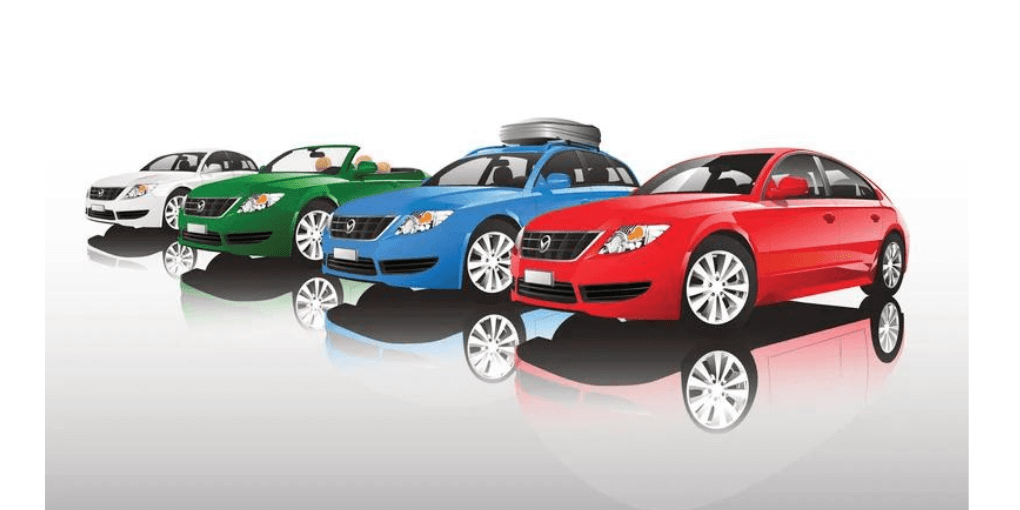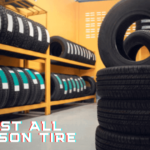Automobile body styles are an integral aspect of the automotive industry, defining the overall look, functionality, and purpose of a vehicle.

Image by macrovector on Freepik
With an array of body styles available in the market, ranging from sedans and SUVs to coupes and convertibles, each offers a unique combination of design, space, and versatility.
The body style of a vehicle not only contributes to its aesthetic appeal but also impacts its performance, handling, and practicality.
The choice of body style can greatly influence the driving experience, passenger capacity, cargo space, and even fuel efficiency.
In this exploration of automobile body styles, we will delve into popular categories, including sedans, SUVs, hatchbacks, coupes, convertibles, and more.
We will examine the defining characteristics, benefits, and potential drawbacks of each style, enabling potential car buyers to make informed decisions based on their needs and preferences.
What Are Automobile Body Styles?
Automobile body styles refer to the various designs or configurations in which vehicles are constructed.
They determine the form, structure, and layout of a vehicle, including the number of doors, seating capacity, and cargo space.
Body styles play a crucial role in defining a vehicle’s appearance, functionality, and intended use.
Different body styles cater to various preferences, needs, and lifestyles.
For example, sedans are typically characterized by a separate trunk compartment and four doors, offering a balance between passenger comfort and practicality.
SUVs, on the other hand, provide spacious interiors, higher ground clearance, and off-road capabilities, making them suitable for larger families or those with an adventurous spirit.
Popular Automobile Body Styles
Sedan
The classic sedan design is characterized by its four-door layout, offering a separate trunk compartment for storage.
Sedans exude an elegant and timeless appearance, often prioritizing passenger comfort and practicality.
With a spacious interior and comfortable seating for both front and rear passengers, sedans are particularly suitable for families and daily commuting.
The rear trunk space provides ample room for groceries, luggage, and other essentials, making them versatile for various tasks.
Sedans excel in providing a smooth and stable ride on roads, ensuring a comfortable journey even during long commutes.
Their aerodynamic design contributes to fuel efficiency and reduced wind noise. Additionally, sedans are known for their well-balanced handling, making them easy to maneuver in urban environments and on highways.
Families benefit from the convenience of rear doors for loading children into car seats and easy access to the back seats.
SUV (Sport Utility Vehicle)
In recent years, SUVs have experienced a significant rise in popularity due to their combination of versatility and performance.
These vehicles are designed to accommodate various terrains and lifestyles, making them a preferred choice for families and adventure enthusiasts.
SUVs offer spacious interiors with ample legroom and cargo capacity, making them suitable for large families, road trips, and hauling items.
SUVs come equipped with all-wheel or four-wheel drive systems, enhancing their off-road capabilities.
This makes them ideal for outdoor activities and navigating challenging conditions like snow or dirt roads.
The higher ground clearance allows for a commanding view of the road, improving safety and confidence while driving.
Modern SUVs often incorporate advanced technology and safety features, further appealing to a broad range of consumers.
Hatchback
Hatchback vehicles are known for their compact size and practical design.
The rear door, which opens upward, integrates the cargo area with the passenger compartment, providing increased flexibility for transporting larger items.
Hatchbacks are urban-friendly due to their maneuverability and ease of parking in tight spaces.
They often offer a good balance between fuel efficiency and versatility, making them economical choices for city dwellers.
The hatchback’s small footprint doesn’t compromise on interior space, as the rear seats can be folded down to create a flat loading surface.
This design appeals to individuals or small families seeking a nimble and adaptable vehicle.
Hatchbacks are well-suited for daily commuting, errands, and weekend outings, making them a practical choice for those who value efficiency and convenience.
Coupe
Coupe cars are distinguished by their sleek and sporty appearance, often featuring a two-door layout and a lower roofline than sedans.
The design emphasizes aesthetics and performance, making them attractive to driving enthusiasts.
Coupled with more powerful engines and tuned suspensions, coupes offer a thrilling driving experience with responsive handling and acceleration.
While the rear seats in coupes may be less spacious compared to sedans, they’re designed to prioritize the driver and front passenger.
Coupes cater to those who value style, agility, and a dynamic driving experience.
They are often seen as symbols of personal expression and status, appealing to individuals who prioritize performance and design.
Convertible
Convertible cars stand out for their unique design feature: a retractable roof that can be folded down to enjoy open-air driving.
This design fosters a connection with the environment, providing a liberating and leisurely driving experience.
Convertibles are often associated with sunny climates and scenic routes, making them popular choices for driving enthusiasts seeking a sense of freedom on the road.
While convertibles may sacrifice some interior space and cargo capacity due to the convertible top mechanism, they compensate with an unparalleled open-top driving sensation.
They are popular among those who want to make a statement and enjoy the thrill of wind in their hair while cruising.
Wagon
Wagon vehicles prioritize practicality and cargo capacity.
With a longer roofline that extends to the rear, wagons offer more space for both passengers and their belongings.
This makes them a great choice for families, travelers, and anyone who requires extra cargo room.
The rear seats can often be folded down in various configurations to accommodate different types of cargo.
Wagons provide a balanced combination of sedan-like comfort and SUV-like utility.
They are particularly suitable for those who need to transport bulky items, such as sports equipment, luggage, or pets, without sacrificing passenger comfort.
Wagon designs may vary, from more traditional and conservative styles to modern and stylish options.
Factors to Consider When Choosing a Body Style
Here are the factors to consider when choosing an automobile body style:
Lifestyle
Your lifestyle plays a crucial role in determining the most suitable body style for your needs and preferences. For example:
- Urban Living: If you live in a city with limited parking space, a compact car like a hatchback or sedan might be more practical.
- Outdoor Activities: If you enjoy outdoor adventures, an SUV or crossover with off-road capabilities could be a great fit.
- Family Needs: For families, a minivan or larger SUV can provide the necessary space for passengers and cargo.
- Driving Enthusiast: If you prioritize performance and sporty driving, a coupe or a high-performance sedan might be appealing.
Practicality
Consider your practical requirements when selecting a body style:
- Passenger Capacity: Determine how many people you need to transport regularly and choose a body style with adequate seating.
- Cargo Space: If you frequently carry large items, look for vehicles with ample cargo space like SUVs, wagons, or hatchbacks.
- Daily Commuting: For daily commuting, fuel efficiency and ease of maneuverability in traffic could be important, favoring smaller cars.
- Towing or Hauling: If you need to tow trailers or haul heavy loads, pickup trucks offer the necessary capability.
Performance and Efficiency
Different body styles offer varying levels of performance and fuel efficiency:
- Performance: If you value speed and handling, coupes and certain sporty models offer enhanced performance characteristics.
- Efficiency: Smaller, aerodynamic designs like sedans and hatchbacks often provide better fuel economy compared to larger vehicles.
Trends and Innovations
- Electric Vehicles (EVs): The rise of EVs has led to innovative body style designs, as EVs don’t require traditional engine components. This can result in spacious interiors and unique features due to the placement of batteries and electric drivetrains.
Customization and Personalization
Customization and personalization are essential factors to consider when choosing an automobile body style.
They allow individuals to tailor their vehicles to reflect their unique tastes and preferences. Here are some aspects to consider within this category:
Exterior Design
Many car manufacturers offer a range of exterior customization options, such as the choice of paint colors, trim packages, and additional styling features.
This allows individuals to create a personalized look that matches their personality and stands out on the road.
Interior Features
The interior of a vehicle can be customized to enhance comfort, convenience, and aesthetic appeal.
Customizable features may include seat materials, upholstery colors, dashboard trims, and technology options.
Individuals can create a personalized space that reflects their preferred level of luxury or sportiness.
Technology and Infotainment
Various body styles offer different levels of technology and infotainment options.
From advanced touchscreens and connectivity features to premium audio systems and driver-assistance technologies, individuals can choose the level of technology that aligns with their preferences and requirements.
Aftermarket Accessories
Aftermarket accessories provide an additional level of customization.
These can include custom wheels, spoilers, body kits, roof racks, and performance upgrades.
By adding aftermarket accessories, individuals can personalize their vehicles further and enhance specific characteristics, such as style or performance.
Modification Potential
Each body style has its own potential for modification, allowing individuals to express their creativity and make their vehicles unique.
Some body styles, such as coupes and SUVs, tend to have a broader range of aftermarket parts and modification options available, providing more opportunities for customization.
Personalization ensures that the chosen body style not only meets functional needs but also reflects the individual’s style and preferences.
Whether it is a subtle touch of personalization or a full customization project, it allows individuals to create a vehicle that is truly their own.
Conclusion
Choosing the perfect automobile body style requires careful consideration of various factors.
By taking into account your lifestyle, practical needs, performance preferences, and the latest trends, you can make an informed decision that aligns with your individual requirements.
Consider how your lifestyle influences your choice of body style.
Whether you reside in a bustling city, enjoy outdoor activities, or prioritize a sporty driving experience, there is a body style that suits your specific needs.
Evaluate the practical aspects such as passenger capacity, cargo space, and fuel efficiency to ensure the chosen body style meets your everyday requirements.

Sudatta is a passionate automotive enthusiast and expert in the field. With a keen eye for detail and a love for all things automotive, he shares insightful articles and reviews to ignite the automotive passion in readers.



